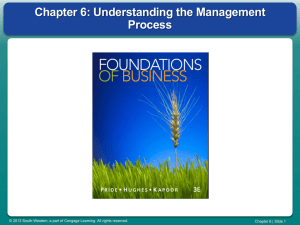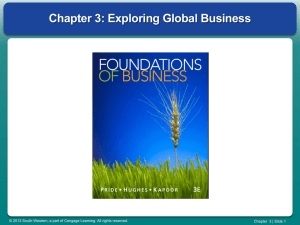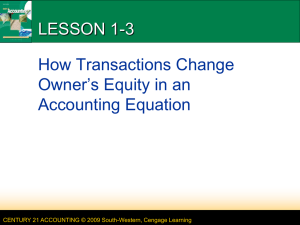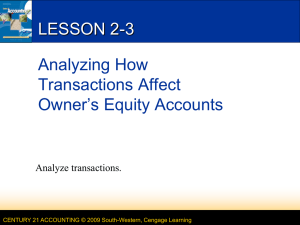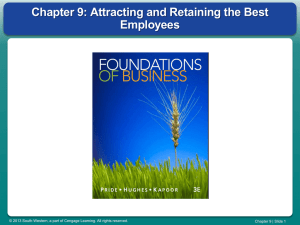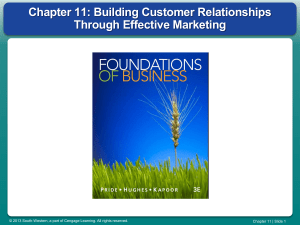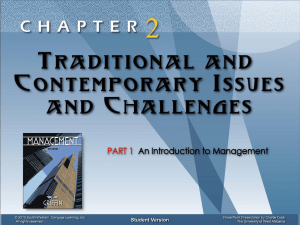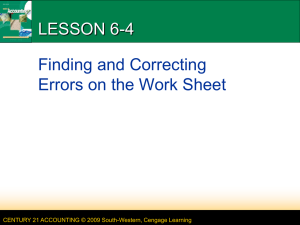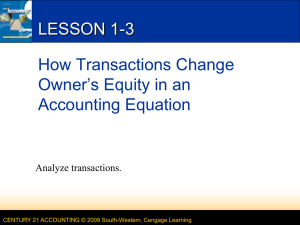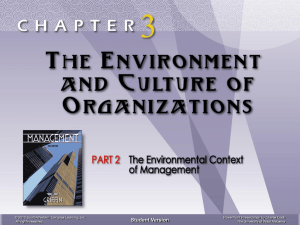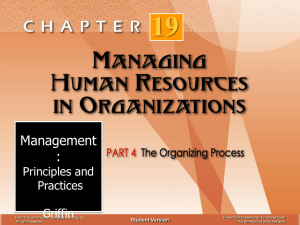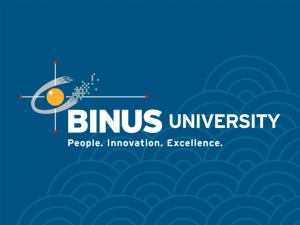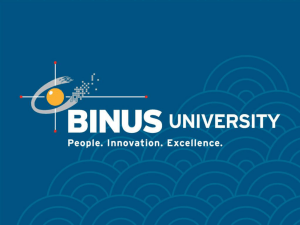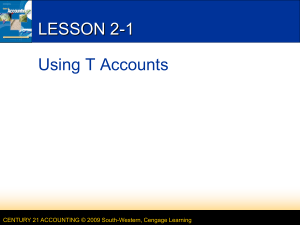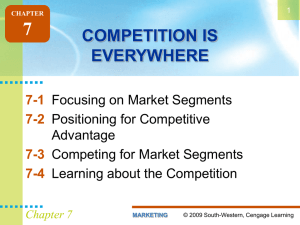Chapter 1 - Cengage Learning
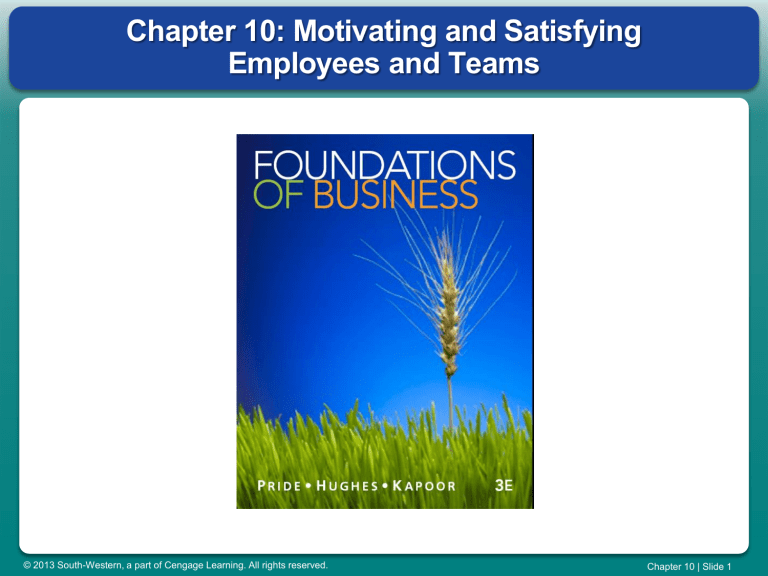
Chapter 10: Motivating and Satisfying
Employees and Teams
© 2013 South-Western, a part of Cengage Learning. All rights reserved.
Chapter 10 | Slide 1
Learning Objectives
1.
2.
3.
4.
5.
Explain what motivation is.
Understand some major historical perspectives on motivation.
Describe three contemporary views of motivation: equity theory, expectancy theory, and goal-setting theory.
Explain several techniques for increasing employee motivation.
Understand the types, development, and uses of teams.
© 2013 South-Western, a part of Cengage Learning. All rights reserved.
Chapter 10 | Slide 2
What Is Motivation?
“Motivation is the individual internal process that energizes, directs, and sustains behavior; the personal “force” that causes you or me to behave in a particular way.”
© 2013 South-Western, a part of Cengage Learning. All rights reserved.
Chapter 10 | Slide 3
Historical Perspectives on Motivation
Scientific Management
The Hawthorne Studies
Maslow’s Hierarchy of Needs
Herzberg’s Motivation-Hygiene Theory
1.
2.
Satisfaction and Dissatisfaction
Using Herzberg’s Motivation-Hygiene
Theory
Theory X and Theory Y
Theory Z
Reinforcement Theory
© 2013 South-Western, a part of Cengage Learning. All rights reserved.
Chapter 10 | Slide 4
Contemporary Views on Motivation
Equity Theory
Expectancy Theory
Goal-Setting Theory
© 2013 South-Western, a part of Cengage Learning. All rights reserved.
Chapter 10 | Slide 5
Key Motivation Techniques
Management by Objectives
Job Enrichment
Behavior Modification
Flextime
Part-Time Work and Job Sharing
Telecommuting
Employee Empowerment
Employee Ownership
© 2013 South-Western, a part of Cengage Learning. All rights reserved.
Chapter 10 | Slide 6
Teams and Teamwork
What Is a Team?
Types of Teams
1.
2.
3.
4.
Problem-Solving Teams
Self-Managed Work Teams
Cross-Functional Teams
Virtual Teams
© 2013 South-Western, a part of Cengage Learning. All rights reserved.
Chapter 10 | Slide 7
Teams and Teamwork (cont.)
Developing and Using Effective Teams
1.
Forming
2.
3.
4.
Storming
Norming
Performing
5.
Adjourning
Roles Within a Team
Team Cohesiveness
Team Conflict and How to Resolve It
Benefits and Limitations of Teams
© 2013 South-Western, a part of Cengage Learning. All rights reserved.
Chapter 10 | Slide 8
